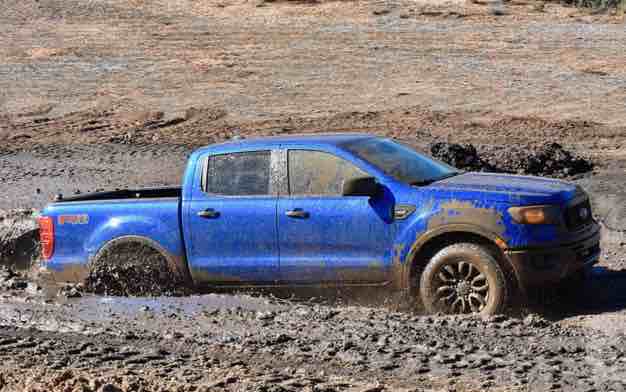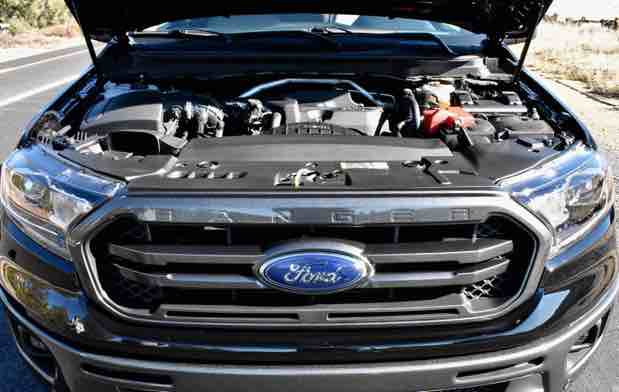2021 Ford Ranger Review
2021 Ford Ranger Review It is anything but official that Ford will build the Raptor Ranger, a reduced version of the High Thief, the speed of defying F-150 Raptor. As with his big brother, the all-terrain Ranger will also have flared wings, sturdy tires, extra ground clearance, and an unrivaled grid. While riding on the same fully boxed scale frame as the regular Ranger, the Raptor will receive a long trip suspension for optimum Trail ratings as well as a more powerful engine for faster desert racing.

The Ford F-150 full-size pickup truck is the best selling vehicle in the United States, but when it comes to small-medium-sized trucks, Ford is behind the curve. When Ford withdrew its U.S. ranger in 2011, the medium-sized truck segment was more or less dead. It has been stocked with aging vehicle buyers does not seem to care. But in recent years, new versions of the Chevrolet Colorado (and its Twin GMC Canyon), Honda Ridgeline, and Toyota Tacoma have invigorated the segment. The old Nissan border continues to linger stubbornly as well, and Jeep will launch its highly anticipated gladiator in the 2019 calendar year.
So for the model year 2019, the Ford Ranger is back. Buyers have the choice between two body configurations – SuperCab with a bed of 6.0 feet, and super crew with a bed of 5.0 feet – and three levels of trim: XL, XLT, and Larix. A rear traction base XL SuperCab starts at $25 395, while a fully charged four-wheel drive Lariat super crew Tops $45 000. Dealers are taking orders now, but deliveries don’t start until January. Even after Ford stopped selling the ranger in the United States, he continued to use the name for trucks sold abroad. The 2019 Ranger is based on the current version of the world market, but Ford says it has been heavily redesigned for North America.
“This [Truck] is based on the Global Ranger platform, but it’s specially designed for the North American market,” Brian Bell, director of Marketing Ranger, said. Major changes include a new frame and suspension configuration, and a specific powertrain for the North American market. The outside style has also changed somewhat.
Read more: 2021 Ford Ranger Rumors
Ford and other car manufacturers make bold style choices with their larger pickups, but that doesn’t seem to be trickling down to medium sized models. The ranger has a pretty conservative look, but again so make most of the other trucks he rivals against.
At least the Ranger’s design is functional. Unlike the Toyota Tacoma, the hood comes down and the front overhang is very short, providing good visibility to the outside, whether off-road or simply by navigating in a parking lot. Unlike the Chevrolet Colorado, the front fascia does not hang as far, making it less likely that the bodywork will be caught on the obstacles.
The interior seems as clear as the outside and is not exactly the last word of sophistication. Even the Top-of-the-Line version lariat seems low rent, despite its leather padding. But it’s a truck, after all. If you want luxury, buy a sedan.
The Ranger is available with a four-door super crew cabin or a SuperCab, with rear half-doors and rear seats required that are only suitable for short trips. As with many other trucks, the four-door cabin is only available with a shorter pickup box, so buyers have to choose between the cabin space and the bed space. Nor will Ford offer a traditional two-door cabin with no rear seats. The interior space is roughly average among the current medium-sized trucks, although the Honda Ridgeline offers much more passenger volume. This is because the Ridgeline is essentially a Honda Pilot crossover with a pickup bed.
The boxes of 5.0 feet and 6.0 feet will adjust to 43.3 cubic feet and 51.8 cubic feet of substance, respectively, according to Ford. Both boxes are 44.8 inches wide in wheelhouses, with a maximum width of 61.4 inches. These figures are comparable to the Toyota Tacoma, Chevrolet Colorado, and Nissan Frontier, and well ahead of the Honda Ridgeline.
The 2019 Ranger gets the Ford Sync 3 familiar infotainment system, with Apple CarPlay/Android auto compatibility, a built-in Wi-Fi hotspot, and a single USB port. The top-level models can be equipped with an 8.0-inch touchscreen display, additional USB ports, and a B&O playback audio system. Sync 3 has proven to be a reliable and intuitive infotainment system, although it does not have too many bells and Whistles. The smooth graphics may be out of place in a Lincoln browser, but they match the non-absurd ethos of the Ranger very well. It is also easy to read regardless of the vehicle. We also appreciate the range of analog controls in the Ranger for vital functions like temperature. The B & O Play sound system offers the appropriate sound quality, but it is not a feature that should be.
The Ranger is available with a multitude of the driver, including self-contained emergency braking, adaptive speed controller, track guard help, and blind spot monitoring. As with Ford’s larger trucks, the blind-point monitoring system can cover an attached trailer as well as the truck itself. In addition to the technology for road driving, the Ranger has a couple of features designed to make it easier. The FX4 package includes a version of the F-150 Raptor Performance Truck Terrain management system and a system called Trail Control.
Read more: 2021 Ford Ranger Specs
The land management system adjusts the vehicle’s different parameters for different surfaces. Includes four modes: normal; Grass, gravel and snow; Mud and rush; and sand. On an off-road road set up by Ford, the Ranger was able to move from loose land through a button to a mud swamp. The track control functions as a field speed controller by controlling acceleration and deceleration while the driver is flying. He guided the guards up and down the steep hill.
While most trucks offer a variety of power transfer options, the Ranger can only be used with one. The 2.3-liter turbocharged four-cylinder engine produces 270 horsepower and 310 km of torque; this is sent to the rear wheels or four to a 10-speed automatic transmission shared with the largest F-150 truck.

2021 Ford Ranger Review
Making a four-cylinder engine seems like a risky move because competing trucks offer larger V6 engines. But in line with Ford’s strategy, using smaller turbo engines to achieve better fuel economy without compromising power. This is also part of the reason Ford chose a double turbocharged V6 for the GT supercar rather than a more exotic engine. So how did this plan work in the ranger?
It’s actually pretty good. The Ranger’s engine has less power than the V6 engines offered by Toyota Tacoma (278 hp) and Chevrolet Colorado (308 hp), but Ford offers more torque. Tacoma and Colorado produce only 265 lb-ft and 275 lb-ft respectively. However, Chevy also has a lower power (186 hp), but a four-cylinder diesel Colorado version, but much more torque (369 lb-ft) than Ford (the same applies to the Chevrolet GMC Canyon Twin).






